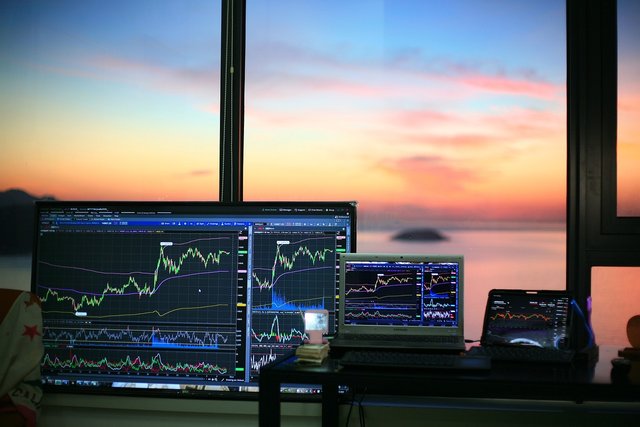FOREX TRADING: UNDERSTANDING FOREX TERMINOLOGIES AND TRADING SESSIONS.

Good day to you all hardworking members of this wonderful community you know who it is, it us your favorite blogger @awesononso and today i will be writing about some forex terminologies and trading sessions.
As I probably mentioned in the part one of the forex trading series post forex trading is a global and world wide market where currencies are traded or bought and sold.
Now to beging to navigate this dynamic landscape effectively new and upcoming traders must grasp, learn and understand the essential terminologies those already in this profession are making use of and also understand the various trading sessions.
In this post we will be capturing and exploring some forex terminologies and key important concepts and jargon, before we then now delve into trading sessions.

Margin: Margin can simply be said to be the amount of capital required to open, take and maintain a leveraged position. It's given by the percentage of the total trade size, one percent of the total trade size.
Lot Size: Basically in forex trading and to forex traders or trades lot size refers to the volume and size of the trade it is the factor or what determines the amount of currency bought in a given transaction as set by the trader.
There are typically three types of lot sizes and they are standard, mini, or micro lots. A standard lot represents 100,000 units of the base currency, while mini lot represents 10,000 units and micro lots represents 1,000 units.
Long and Short Positions: A long position or has it is popularly used by forex traders in Nigeria to go long it involves buying a currency pair with the expectation of making profits and that its value will rise.
While a short position or to go short involves the selling of a currency pair with the expectation that its value will fall and as a result preventing loss.
Bid and Ask Price: The bid price can simply be said to be the price at which traders can and are willing to sell a currency pair, while the ask price is simply the price at which they can and are willing to buy a currency pair.
The difference between the bid price and the ask price is simply known as the spread.
Pip: A pip which is the acronym for percentage in point can simply be said to be the smallest unit of price movement currency pair can make in forex trading.
Most currency pairs in the forex market are quoted to four decimal places except the Japanese yen and when trading synthetics, one pip representing a movement of one unit in the last decimal place.
Here is how you calculate PIP; take for example EURUSD is a currency pair and it moves from 1.1980 to 1.1985 starting from the forth decimal you can notice a change of 5.
Leverage: Leverage can simply be said to be the tool that allows traders to control and enter larger positions with a smaller amount of capital.
It amplifies both the profits and the losses, making it a powerful but risky tool and as upcoming trader you should probably stick to leverages like one is to fifty(1:50).
Currency Pair: Basically in forex trading it involves the simultaneous buying and selling of currencies or currency pair, currency pair can simply be said to be the two currencies that are traded simultaneously.
For example, EURUSD represents the euro against the US dollar, where the EUR is known as the quote currency and USD known as the base currency.

The forex market operates twenty four, five meaning it is open for twenty four hours a day and five days a week, across different time zones and are most active across time zones which I shall be giving in west African time.
There are four main trading sessions: the Sydney session, the Tokyo session, the London session, and the New York session.
London Session: The London session is the most active trading session, accounting for a significant portion of global forex trading volume, and it kicks off it's trading day by 8 AM(WAT) and ends by 5 PM(WAT).
It overlaps with the end of the Tokyo session and the beginning of the New York session, creating high liquidity and volatility.
New York Session: The New York session is the major and last trading session of the day. It overlaps with the end of the London session and is characterized by increased volatility owing to the fact that traders from both Europe and North America are active.
Major currency pairs involving the US dollar (USD) are most actively traded during this session.
With it's most active time kicking off at The New York trading session begins at 2 PM(WAT) and ends at 11 PM (WAT).
Sydney Session: The Sydney session which involves the Australian and New Zealand market kicks off the forex trading day by 10PM(WAT) and ends by 7AM(WAT).
It overlaps with the end of the New York session.
Tokyo Session: The Tokyo session is the second major trading session. It overlaps with the Sydney session and kicks offs it's trading day by 12 AM(WAT) and ends by 9 AM(WAT).
Upvoted! Thank you for supporting witness @jswit.